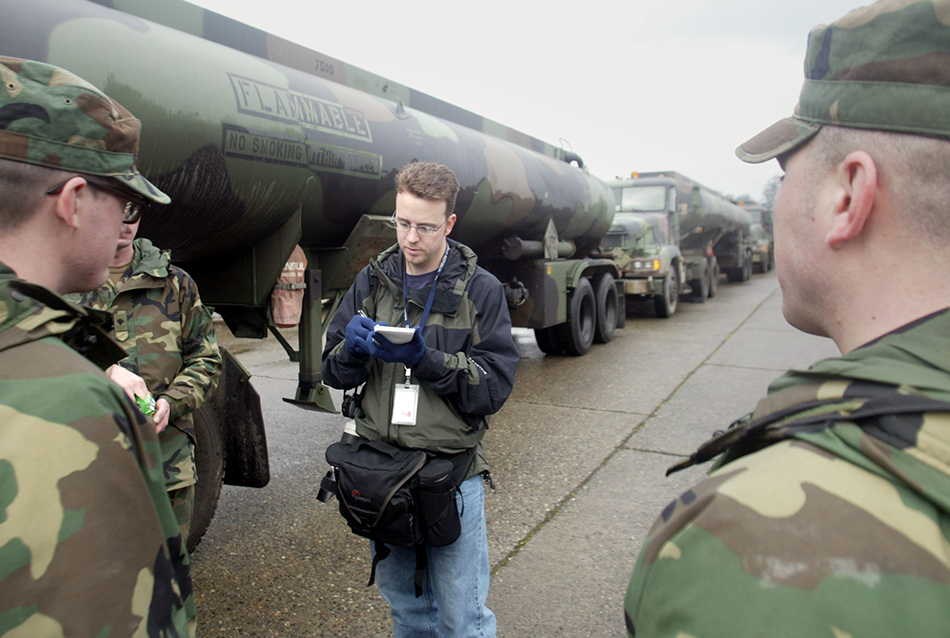
I spent most of my professional life as a press-card carrying newspaper photojournalist. Counting the full-time, part-time and stringer periods, it amounts to about 13 years in photojournalism, not including the years I spent freelancing and interning during college.
I know. I’m experienced.
I completely and absolutely loved it. I look at younger photographers coming up now and I lament for them that the amazing avenue I had available to me—newspapers—is no longer so viable for them. There is no better university than a daily newspaper for developing the chops it takes to succeed as a professional photographer. Newspapers are a place where photographers can truly test themselves through regular exposure to the widest possible mix of environments, people and situations. For those who are lucky enough to be newspaper staff photographers, the experience is transformative.
Here are a few of the lessons that newspapers taught me that I consider indispensable to my career and success as a photographer now, in no particular order:
The importance of making images, not taking photos.
In the beginning of my career, I ‘took’ photos. I photographed simply what was there. Over time, I began to ‘make’ images. I anticipated. I focused on what was important and left the rest. I discerned. I made choices. I made storytelling images. This is called, developing a point of view.
Resilience.
The time I was on a seven-day hike in the middle of the desert, photographing a wilderness camp for teens, and one of my two camera bodies and my long telephoto lens got smashed and dunked in a river within one hour of the trip starting? Resilience. The time I was up for days straight while embedded in Iraq, writing stories and transmitting photos? Resilience. The four years I spent working on a long-term project on the Yakama Indian Nation, working long hours, getting no-shows? Resilience. Resilience is what gets you through the rough spots when the glamour and ‘fun’ of seeing your name in print wears off.
The value of constant improvement.
In the rush of the daily newspaper, sometimes the images published in the paper aren’t the most exciting or the most dramatic photos possible. Often they are prosaic, not creative and downright boring. The kinds of images I wished I didn’t have to put my name under. On those days, feeling dejected and unworthy of the title “photojournalist,” I might have entertained becoming a “sandwich artist” at Subway. But the beauty of a daily newspaper is that there’s always the next day. A new day, a new opportunity to fight the fight. A new chance to take chances, put yourself on the line and do the type of work that makes you feel great and maybe—possibly—can make a difference in your community. At the paper I learned that every day, it was getting up every day and doing your best.
It’s about the story, not about you.
There’s a great few lines in the great movie The Paper where Bernie, the editor, talks to the managing editor, Alicia, who has just asked for another raise: “The people we cover, we move in their world, but it is their world. You can’t live like them. You’ll never keep up. If you try to make this job about the money…you’ll be nothing but miserable, because we don’t get the money. Never have, never will.”
To me this speaks about being authentic and knowing that I’m part of something bigger. Everything is in service to the story, and the journalist, like the photographer, belongs in the trenches, honing their craft. If we do it well, we get some recognition and we get financial rewards…but those are side products and not the main goal.
Sometimes, you just have to make a decision. It’ll be ok.
I learned at the paper that the quicker you could make a decision, the better. The more decisions you make, the better chance you have that some of them will be good ones. Overthinking things usually leads to paralysis and worse decisions.
Do more than the expected. Be a complete journalist.
I learned quickly that if I came back from an assignment with only one or two visual options, whether from a portrait or a news event, then my editors would not be pleased. Not only that, but I was expected to take boring photos, like building exterior “mug” shots and details that were boring, but gave the page designers more options. I was a print journalism major initially, before I picked up a camera. I’ve always loved to write. I found that providing great images was expected in my job, but writing grammatically-correct, journalistic captions elevated me in the eyes of the print journalists and editors I worked with. They saw me as someone who was a journalist first, and a photographer second. I thus learned that you have to pay attention to all aspects of the job—not just bringing back a pretty picture. In this day and age, that’s expected and it’s just not enough.
Constraints are valuable.
As a photojournalist, I rarely had enough time. I had to go into a situation cold and make something happen. Hopefully something great. At those moments, I usually did quite well. When I was given more time and more options, I found that I wasted time thinking about options and less time actually committing to my subject and the story. Journalism taught me that having less—less time, less resources, less options—made me focus on what I could do with what I had, making me more creative and nimble.
The importance of studying human behavior.
To make it in business, to make it as a journalist, to make it in life, one thing is of critical importance. If you don’t know how to deal with people, work with people and understand people, you have an uphill climb. Photojournalism taught me to be a student of human behavior; to look for non-verbal cues and to watch what people say versus what they do. It’s an endlessly fascinating area of study, and it never ends.
Moments trump the technical every time.
I learned early on that if I got so focused on making an image “perfect” from a technical standpoint that I forgot about the subject and the mood and the “moment”, then I was missing the forest for the trees. When in doubt, capture moments that connect with people emotionally. If you can make it technically perfect, great. But if you have to choose it’s not even a contest. Authentic moments always win.
Meaning matters.
What made the long hours and low pay of a staff photojournalist worth it? It was that it was about something bigger than a camera and getting my pictures in print. It was that my job had meaning. The images I took mattered to someone—maybe just the subject and their friends, but sometimes it could make a difference in a community and the larger world. I had the power with my photographs to make a difference, and that fueled me. I’ve learned that you can’t do things just for money. You have to have a reason “why”. That search for meaning has fueled my career as a photojournalist and it still does as a commercial photographer.
Those are a few of the lessons learned as a working photojournalist, shooting everything from Johnny’s first day of kindergarten to Michael Jordan during his short stint as a baseball player with the Birmingham Barons (admittedly, the reality of a newspaper shooter is 99 per cent the former and 1 per cent the latter). I could have learned these lessons and undoubtedly would have, outside of newspapers. Life has a way of rubbing the rough edges off, but I know no other environment but the newspaper that did so in such a short period of time, or so completely. I’ll always be completely thankful for that part of my career. It gave me much more than I gave it.
–30–
